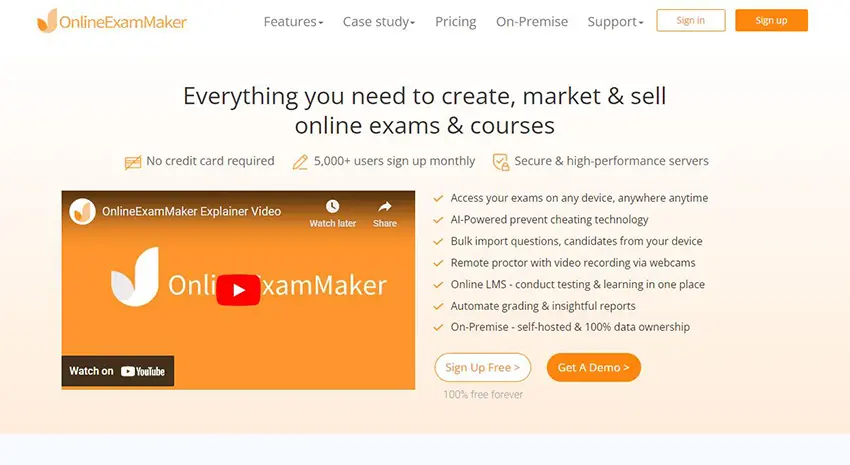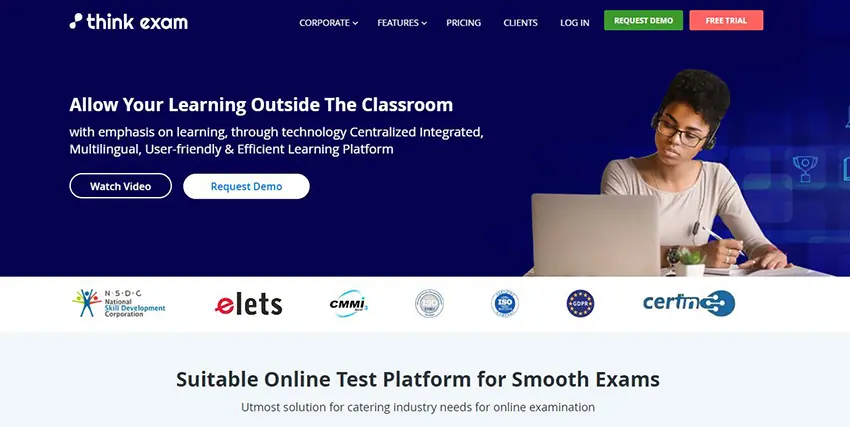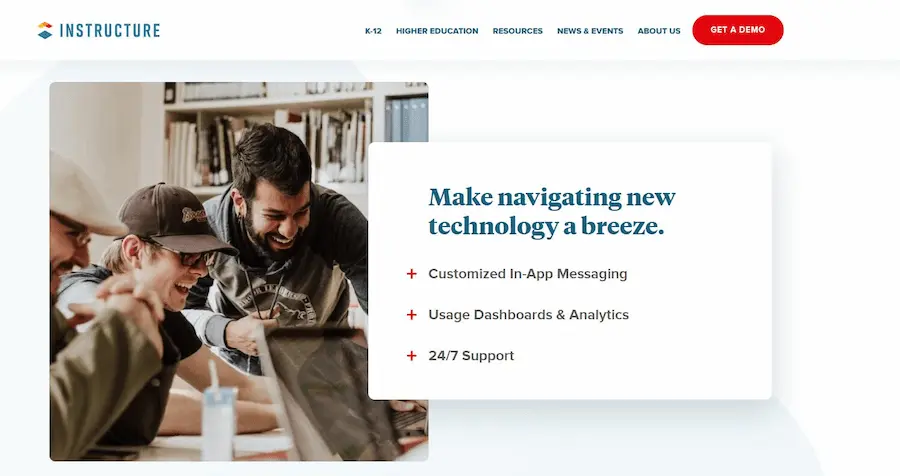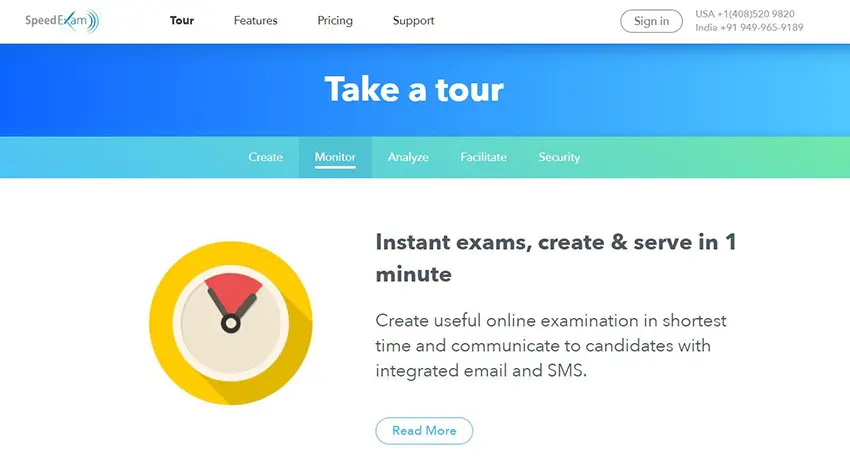Teaching is a continuous cycle of knowledge and patience. Learning is laid down and improved on to instill understanding. And, of course, patience is the key to enforcing learning! An educator should harbor the traits of resilience and adaptability. It requires them to jump over learning hurdles. And to be intelligent and strategic. In teaching, they are the guidance that students need to become better. In that case, the lessons and tests should center around student needs! The key source that drives learning and teaching is quality content. The lessons, assignments, and periodicals we give are fundamental to education. So, this ensures that we render the best service we have as teachers! And this, my friend, is called Data-driven Teaching.
- What is Data-driven Teaching?
- Benefits of Data-driven Teaching
- 4 Best Tools for Data-driven Teaching
- How to Create A Data-driven Strategy
- Data-driven Teaching FAQ
What is Data-driven Teaching?
Data-driven teaching is the delicate process of collecting student information. It’s not limited to students but also involves teaching strategies. Data-driven teaching is gathering and analyzing data insight from previous student performance. In this way, we’re figuring out how to improve their knowledge. And we can enhance the way we teach students! It allows you to plan future steps to improve knowledge and learning. And it lets you get in touch with your student’s level of understanding. In simple terms, data-driven teaching is converting this information into actionable teaching! Learn how to make better decisions and lesson plans and be sensitive to your student’s preferences.
We need that empathy and connection with our students. Remember that we’ve dealt with research before as students, too. We use data to improve existing activities and strategies. Data-driven Teaching is just what that is in education! We handle raw information that students give us through class interaction. And learn from how they perform in class through analysis. It’s also through observation and data-gathering that we implement better learning. Students are already there! They only need a further boost, which teachers can give! The results of this strategic teaching method are limitless. And, of course, you can only see once you’ve tried it!
Benefits of Data-driven Teaching
Here are the benefits of data-driven teaching that teachers should know and learn about:
Understanding Students’ Strengths and Weaknesses
Data-driven research and testing help assess student performance. You can identify what areas of learning they do best in. And you can improve the areas where they need assistance. Improve on what they already have, and guide them to becoming better learners.
Achieving Student Preferences
It helps us figure out what students prefer when teaching and taking tests. And it provides us with their insight on our performance as their teachers. Applying our ways doesn’t always work out the way we planned. So, learning how we can achieve learning from students is a plus in data-driven teaching.
Student and Teacher Engagement
Data-driven teaching is an interactive way of education. It allows us to connect and understand students at their level. It, in turn, lets students feel that they’re heard and respected as learners. Intellectual respect is a two-way road. Meeting them halfway is possible with data-driven teaching.
Just to let you know
Sign up for a free OnlineExamMaker account to create an interactive online quiz in minutes – automatic grading & mobile friendly.
Improving Student’s Learning Experience
It improves the overall experience in and outside the classroom. Inside the class, we can engage students with entertaining and thought-inducing lessons. Data-driven teaching allows us to guide them even beyond our classes. We can extend our help to them through better assignments and quizzes.
Target Locking the Right Areas of Learning
We sometimes overlook the significant grounds of teaching. It’s understanding which area needs more help. And which area is already good with students. Data-driven teaching lets us learn the right areas we should enhance.
Out with the Old, In with the New
Data-driven teaching makes way for new teaching strategies. It lets us identify the methods that aren’t serving us well. Not only us teachers but our students as well! It enables us to conjure better and new teaching techniques or strategies.
The effect of data-driven teaching is a progressive domino effect. It just needs the appropriate materials and procedures! The force or starting force is the teachers who use valuable information. Teachers can get information from previous student performances. May it be in active lessons, assignments, quizzes, and tests! This data will improve the teacher’s teaching strategies. They apply this to their lectures, assignments, and tests. And students can learn better with ease since we’ve already made it a little easier for them! Here are the four best tools you can use for Data-driven Teaching.
4 Best Tools for Data-driven Teaching
1. OnlineExamMaker

G2 Rating: 4.5/5
Pricing: Free to use, no credit card needed. For the paid plans, you can choose the Essentials plan, which starts at $17/month; the Professional plan, which starts at $35/month; and the Premium plan, which starts at $55/month billed annually.
OnlineExamMaker is an all-in-one teaching and testing platform built for your needs. It provides intelligent online quizzes and tests. You can save energy and time with OnlineExamMaker and its unique features. OnlineExamMaker is a powerful and easy-to-navigate learning tool. It lets teachers create data-driven lessons, exams, and tests for education. OnlineExamMaker is also for training, distributing requirements, and assessments. It provides a versatile platform for instruction and learning. Students and teachers can use OnlineExamMaker for testing and reviewing.
It has a broad and flexible question bank. OnlineExamMaker lets you create multidimensional questions. It has steady and steadfast servers that are foolproof and failproof! You can assign exams to large numbers of candidates without fail.
OnlineExamMaker also provides AI-powered anti-cheating solutions. It lets you track any malicious activity when conducting online tests and exams. In that way, you can prepare a fair and honest learning environment. And it has a remote proctoring system with a webcam feature. It allows you to monitor and guide students while they take quizzes and tests!
Create Your Next Quiz/Exam with OnlineExamMaker
2. ThinkExam

Capterra Rating: 4.6/5
Pricing: Free demo, ThinkExam offers custom pricing based on your business needs.
ThinkExam is an excellent online test platform for conducting online tests. It allows teachers to prepare for smooth online teaching and testing. It improves the flow of data and learning between students and teachers. ThinkExam is a one-stop tool for online tests and assessments. It has an effortless and neat system that allows swift information transmission. Teachers can easily register and create the tests or materials they need. ThinkExam provides safe data encryption that protects your information. It has an automated result generator and evaluation, and lets your students share their feedback so you can enhance your teaching.
ThinkExam has intelligent teaching and testing tools for varied skills. It offers excellent customer support. And it renders you with a sustained examining platform. ThinkExam has dedicated professionals who continuously work to improve the platform. You can conduct and create tests anywhere and anytime with ThinkExam. The software assists you in creating and designing a suitable test for your students. And it has an error-free synchronized system. You can subscribe and improve the teaching environment with ThinkExam.
3. Canvas LMS

G2 Rating: 4.4/5
Pricing: Free demo, custom pricing.
Canvas LMS is an online learning platform built for teachers’ and students’ needs. It makes teaching and learning accessible and easy for everyone. It considers all levels of learners to all sorts of faculties. It also provides training assistance to business owners. It provides a teaching platform for different institutions in different fields. You can make training and education more engaging with Canvas LMS. And you can organize all your teaching materials in one space. Canvas LMS lets you provide fair access to instruction and learning. You can manage students and learners any time of any day! Canvas LMS is a simple and intuitive learning software.
With Canvas, you can create educational content like lessons, assignments, quizzes, and video conferences. And it even has a mobile app that furthers mobility and accessibility. You can integrate third-party applications into your tests with Canvas LMS. It amplifies learning and teaching opportunities for both teachers and students. Canvas LMS allows integration from popular K-12 apps. It lets you create a personalized learning environment for each student. Working in Canvas LMS maximizes your teaching and students’ understanding. And Canvas LMS is free for teachers! It provides teachers with the fundamental features of Canvas LMS, even if your school is not a Canvas customer. You can deliver courses and lessons with Canvas LMS at the lowest cost.
4. SpeedExam

Capterra Rating: 4.8/5
Pricing: Free. Premium subscription available for $20/month for Professional plan, or $125/month for Ultimate plan.
SpeedExam lets you create and deliver tests with ease. You can award and test students for their achievements and markings. And it enables you to train and enhance your teaching skills! SpeedExam provides testing and data security fit for your needs. It alerts teachers on suspicious activity during tests. SpeedExam also lets you save and export your testing data. You can upload your files and materials from Excel and Word, too. SpeedExam provides certification and awarding after tests and quizzes.
SpeedExam is your number one online testing partner. It lets you assign additional instructors to manage and monitor students. And it allows you to integrate your brand or school into its software. The tool provides detailed reports and data analysis on your tests and students. And it has a cloud that can store your files online! SpeedExam has excellent customer support for its users. It has a registration or student portal feature that students can formally log into.
How to Create A Data-driven Strategy
Strategizing is also a continuous activity. Teachers will face different hurdles in teaching, and they should prepare! Here are the things teachers should consider when planning and using the Data-driven teaching technique:
● Security
● Medium
● Student Preference
● Obstacles
● Teaching Tools
Security
You will be handling a lot of data and sensitive student information. Make sure that the tools you use are secure and trustworthy. Data breaches are inevitable. And it’s up to us to do all forms of prevention. The tools we use are mostly online and open-sourced. So, we should stay alert for possible threats to us and our students.
Medium
We need to assess the best medium of instruction to use. So, we should understand the nuances of teaching in these mediums. Face-to-face teaching and testing are not that different from when we conduct it online. However, there are slight differences that can affect the level of teaching effectiveness. It includes barriers in both mediums that we should prepare for.
Student Preference
As teachers, we need to adopt a holistic approach to data collection. We need to understand that learning is interconnected. It requires the cooperation of students with lessons to form learning. And with that, we should be sensitive to how they want us to teach them. Understanding and empathy go a long way with teaching.
Obstacles
Understanding the barriers we face is detrimental to teaching. It could range from behavior and understanding to external factors. We need to show compassion and patience when we want to gather information. Let’s be sensitive and cautious when dealing with problems, especially our students’ problems.
Tools
Choosing the right tools for data-driven teaching is crucial. It’s a significant factor in the success of teaching our students. The appropriate teaching software could make or break your efforts for improvement. So, when choosing a teaching tool, remember this. Make sure that it benefits you and your students.
Data-driven Teaching FAQ
Is data-driven teaching based solely on research?
Data-driven teaching is not only based on researching information and strategies. It involves the thorough observation of students and their behavior. It identifies the other factors that affect their learning and understanding. You can use different techniques to gather data for teaching improvement. Teaching tools are still a form of data-gathering but a more flexible way.
How can data-driven teaching benefit students?
Data-driven teaching is beneficial for students as learners and future professionals. It helps them identify where they have trouble in lessons. And it provides a better insight into why students find it hard. Teachers can use this newly gathered information to advise and help their students. It collectively helps a class thrive and a learning environment to prosper. Data-driven teaching is an effective and worthwhile method of instruction.
Are data-driven teaching tools hard to use?
Data-driven teaching tools are for the ease of teachers. So, choose tools that make your job easier. Some teaching tools are hard to navigate and understand. And that’s why we provided you with a list you can always refer to! It helps you and your students share and learn from each other. An equitable learning environment is a fruitful learning environment.
What is the best software for data-driven teaching?
OnlineExamMaker is the best software to conduct data-driven teaching and learning. It has every possible tool to improve teaching including online assessment creation, question bank, student management system, learning management system, certificate maker, and more. It is also beginner-friendly, free to use for teachers and trainers.
What types of data can inform teaching?
Student performance data (grades, progress reports, test scores), engagement metrics (participation, attendance), student feedback surveys, and behavioral referral data.
How can teachers collect and analyze data effectively?
Teachers can collect data through assessments, quizzes, observations, and student work. Analyzing data involves looking for patterns, trends, and areas of strength or weakness. Utilizing tools and software designed for data analysis can also enhance the efficiency of this process.
What challenges might educators face in implementing data-driven teaching?
Challenges may include a lack of access to appropriate technology, time constraints, resistance to change, and the need for professional development. Overcoming these challenges often requires a commitment to ongoing training and a supportive school culture.
How can parents be involved in data-driven teaching?
Educators can communicate with parents about their child’s progress, share assessment results, and discuss strategies for improvement. Informed parents can provide valuable support at home to reinforce classroom learning.
How can schools establish a culture of data-driven teaching?
Schools can foster a culture of data-driven teaching by providing professional development opportunities, encouraging collaboration among educators, and integrating data analysis into regular planning and assessment cycles. Leadership support and a clear vision for the use of data in instruction are also key factors.